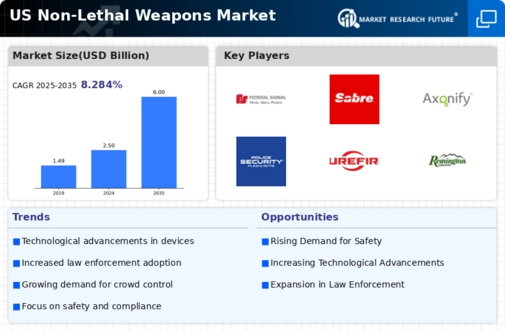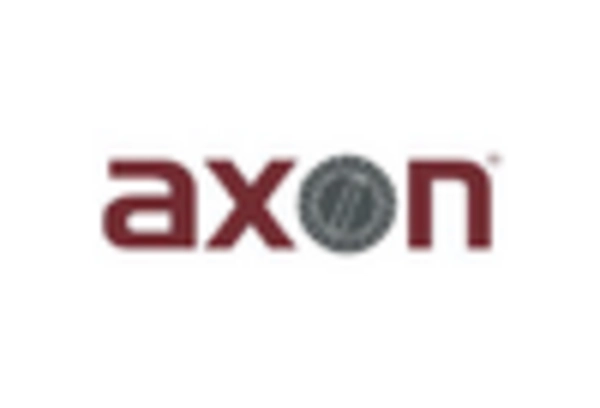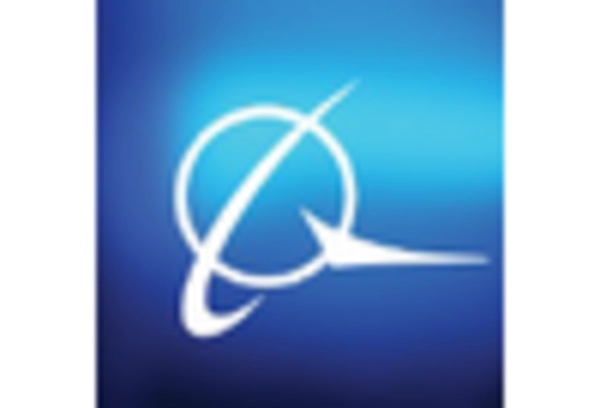Rising Awareness of Ethical Policing
The growing emphasis on ethical policing practices is significantly impacting the non lethal-weapons market. As public scrutiny of law enforcement practices intensifies, there is a heightened demand for tools that promote accountability and minimize harm. Non lethal weapons are increasingly viewed as essential components of a responsible policing strategy. Surveys indicate that approximately 70% of the public supports the use of non lethal options in law enforcement, reflecting a shift in societal expectations. This awareness is likely to drive investment in non lethal technologies, with projections suggesting a market growth of 5% annually. The alignment of non lethal weapons with ethical policing principles is expected to enhance their adoption and integration into law enforcement practices.
Growing Demand for Public Safety Solutions
The increasing focus on public safety in urban areas appears to drive the non lethal-weapons market. As crime rates fluctuate, municipalities are investing in non lethal options to enhance community safety without resorting to lethal force. This trend is evident in the allocation of budgets, where local governments are reportedly increasing expenditures on non lethal technologies. In 2024, it was estimated that the market for non lethal weapons reached approximately $1.5 billion in the US, with projections indicating a compound annual growth rate (CAGR) of around 6% through 2028. This growing demand reflects a societal shift towards prioritizing non lethal methods in law enforcement and crowd control, thereby expanding the non lethal-weapons market.
Increased Focus on Crowd Control Solutions
The rising need for effective crowd control measures is influencing the non lethal-weapons market. Events such as protests, large gatherings, and public demonstrations necessitate the use of non lethal options to manage crowds without escalating violence. Law enforcement agencies are increasingly adopting non lethal weapons to ensure public order while minimizing harm. Reports indicate that the market for crowd control non lethal solutions is expected to grow by approximately 8% annually, reflecting a shift in strategy towards non lethal methods. This trend underscores the importance of non lethal weapons in maintaining peace during potentially volatile situations, thereby reinforcing their role in the non lethal-weapons market.
Legislative Support for Non Lethal Options
Legislative measures aimed at promoting non lethal weapons are emerging as a key driver in the non lethal-weapons market. Various states are enacting laws that encourage the use of non lethal alternatives in law enforcement, thereby reducing reliance on firearms. This regulatory support is fostering an environment conducive to the growth of the non lethal-weapons market. For instance, some states have introduced funding programs to assist police departments in acquiring non lethal technologies. As a result, the market is likely to see increased participation from manufacturers and suppliers, with an anticipated market value of $1.8 billion by 2027. This legislative backing is crucial for the sustained expansion of the non lethal-weapons market.
Technological Innovations in Non Lethal Weapons
Technological advancements are reshaping the non lethal-weapons market, leading to the development of more effective and safer products. Innovations such as advanced tasers, pepper spray formulations, and sound-based deterrents are becoming increasingly prevalent. These technologies not only enhance the efficacy of non lethal weapons but also address concerns regarding safety and ethical use. For instance, the introduction of smart tasers that can record data during deployment is gaining traction among law enforcement agencies. The market for these innovative solutions is projected to grow significantly, with estimates suggesting a value of $2 billion by 2026. This technological evolution is likely to attract further investment and interest in the non lethal-weapons market.

















Leave a Comment